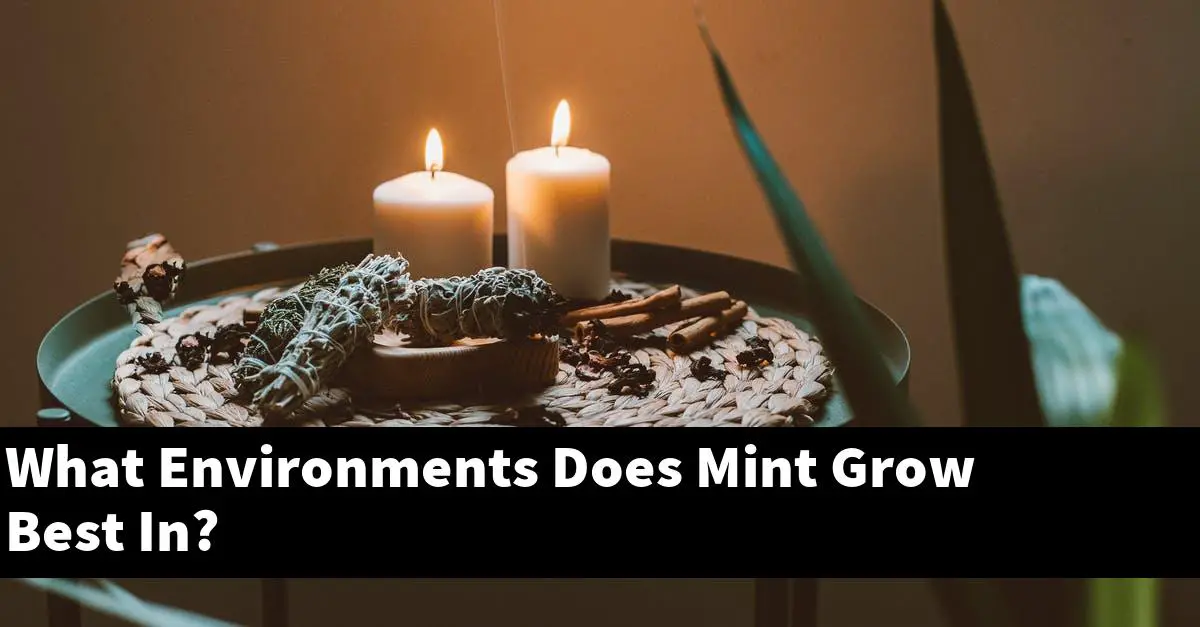Mint is a perennial herb that is part of the Lamiaceae family. There are many different species of mint, including peppermint, spearmint, and chocolate mint.
Mint grows best in moist, shady environments with well-drained soil. It is a fast-growing plant that can become invasive if not kept in check.
Where does mint grow best?
Mint is a herbaceous perennial plant that typically grows in moist, cool climates. It is native to Europe and Asia Minor, and has been cultivated in North America since the 18th century.
Mint grows best in full sun or part shade and should be planted in well-drained soil.
What habitat does mint grow in?
Mint grows in moist, cool soil in full sun.
3 Best way to grow mint
Mint is a hardy perennial herb that thrives in cool, moist environments. It can be propagated by division or by root cuttings taken in late winter or early spring.
Mint can also be grown from seed. When growing mint, it is important to keep the plant well watered and fertilized.
Does mint need full sun?
Mint is a hardy perennial that can handle some sun, but it thrives in full sun. The leaves are glossy and green, and the flowers are small and green.
How to plant mint?
Mint is a perennial plant that is easily grown in most temperate climates. Mint is a hardy plant that can withstand frost and moderate drought.
Mint can be propagated by division, root division, or by growing mint from seed. Mint should be planted in a well-drained soil that is enriched with compost.
Mint prefers full sun, but will tolerate partial sun or light shade. Mint should be planted in the fall, but can be transplanted into the garden during the early spring.
How do you grow mint plants?
Mint plants are grown from seeds. The best way to grow mint plants is to start with a fresh seed packet.
Remove the seeds from the packet and soak them overnight in room temperature water. The next day, pour the water off and place the seeds in a glass or plastic container with fresh water.
Change the water every two days until the seedlings are large enough to be transplanted into their own pot. Mint plants do best in full sun, but can tolerate partial shade.
When the plants are large enough, they are ready to be transplanted into their own pot. Mint plants grow quickly and can be transplanted into their own pot as soon as the roots are large enough.
Does mint grow back every year?
Mint does not grow back every year. Mint does not grow back every year because it is a perennial plant.
A perennial plant is a plant that lives more than one year. Mint is a herbaceous plant and it lives for 3 to 5 years.
How much sun does a mint plant need?
Mint plants do best in partial sun to full sun conditions. They need around 6-8 hours of direct sunlight per day.
Is mint a hardy plant?
Mint is not a hardy plant. It is best to grow mint in containers because it is not very hardy in the ground.
Where should you not plant mint?
Mint is a hardy perennial that can be grown in most climates, but it is not recommended for growing in areas that receive a lot of direct sunlight or in areas that experience high humidity levels. Mint is also not recommended for growing in areas that are prone to freeze or hard freezes.
How long does mint take to grow?
Mint is a perennial herb that grows 1-2 feet tall and has a wide variety of shapes, including upright, spreading, and erect forms. The leaves are lance-shaped and are arranged in a whorled fashion.
The mint plant produces small, white, star-shaped flowers that bloom from May to July. The mint plant produces small, green, spade-shaped leaves that are arranged in a whorled fashion.
Mint is considered to be a shade-loving plant and will grow best in full sunlight or partial sunlight.
Final Thoughts
Mint grows best in moist, shady conditions with well-drained soil. It can be grown indoors or outdoors, but if you are growing it indoors, make sure to provide plenty of ventilation to prevent the plant from becoming too humid.

